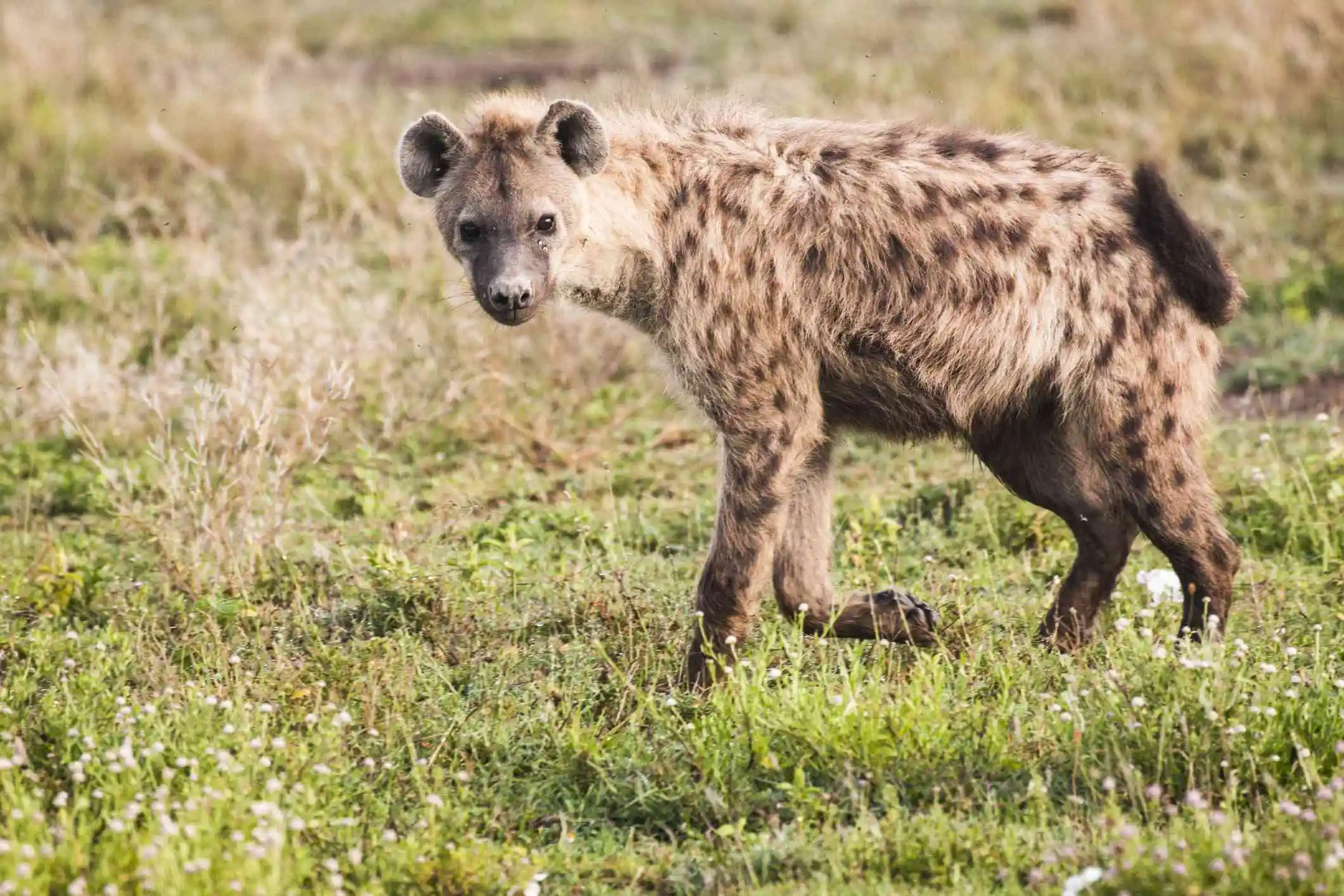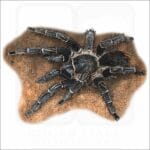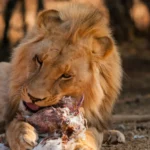Welcome to the untamed African savanna, where nature reigns supreme. This mesmerizing wilderness is teeming with a vibrant tapestry of animal life, each creature a masterpiece of adaptation, with unique behaviors that are a testament to the rich diversity of this breathtaking ecosystem. Join us on a captivating journey as we explore the secrets of the savanna, where the fierce lion dominates, the sleek cheetah races, the majestic elephant roams, and the graceful zebra dances, all contributing to the harmonious symphony of life that defines this awe-inspiring land.
What Animals Live in the Savanna?
Imagine a vast ocean of grass stretching out before you, where the sky seems to go on forever. Welcome to the African savanna, a wild and wonderful place teeming with life.
Lions: The Rulers of the Pride
Picture the majestic lion, the king of the savanna. These mighty predators roam the grasslands in search of prey, their powerful roars echoing across the plains. They’re not just fearsome hunters but also social animals, living in prides with strict hierarchies.
Cheetahs: The Speed Demons
If speed is your thing, then meet the cheetah. These lightning-fast cats can sprint at speeds of up to 70 mph, making them the fastest land animals on Earth. They’re not as big as lions, but they’re just as impressive with their lightning reflexes.
Elephants: The Gentle Giants
Imagine these massive, gray behemoths wandering through the savanna. Elephants are the largest land mammals, known for their incredible memory and intelligence. They roam in herds, their deep rumbles echoing through the grasslands.
Zebras: The Fashionistas of the Savannah
You can’t miss these stylish herbivores with their distinctive black and white stripes. Zebras graze gracefully in herds, their stripes acting as a form of camouflage in the tall grass. They’re also surprisingly fast and can outrun predators with ease.
Birds: A Symphony in the Sky
Look up, and you’ll be greeted by a chorus of bird songs. Eagles soar majestically overhead, their keen eyes searching for prey. Vultures, like nature’s vacuum cleaners, help keep the ecosystem clean by feeding on carcasses. And don’t forget the parrots, who add flashes of color to the savanna with their vibrant plumage.
Reptiles: Lurking in the Shadows
Beneath the savanna’s grasses, you’ll find some sneaky reptiles. Monitor lizards bask in the sun, while snakes slither through the undergrowth. Crocodiles lurk in waterholes, patiently waiting for unsuspecting prey. These reptiles play a vital role in maintaining the ecosystem’s balance.
Amphibians and Insects: The Unsung Heroes
The rainy season transforms the savanna into a paradise for amphibians. Frogs and toads emerge from their hiding places, their croaking and chirping filling the air. Insects, too, are essential players in this ecosystem, providing food for birds and other animals. From tiny termites to beautiful butterflies, they add a touch of diversity and wonder to the savanna’s tapestry.
Explore facts about the savanna to discover its captivating landscapes and diverse wildlife. Delve into the realm of plants in the savanna, uncovering the unique adaptations that allow them to thrive in this dynamic ecosystem. Unravel the dietary habits of lions, the apex predators of the savanna, by learning what do lions eat in the savanna.
What are the Unique Challenges Animals Face in the Savanna and How Have They Adapted?
The savanna is a vast and challenging ecosystem, characterized by its scorching heat, erratic rainfall, and frequent wildfires. Amidst this harsh environment, a diverse array of animals has evolved ingenious adaptations to overcome these formidable obstacles and flourish in this unforgiving landscape.
Conquering Water Scarcity
Water is a precious commodity in the savanna, and animals have developed clever strategies to quench their thirst. Elephants, with their massive trunks, can suck up gallons of water and store it for later use. Camels, on the other hand, have specially adapted humps that serve as water reservoirs, allowing them to go days without drinking. Lions, known for their hunting prowess, have developed the ability to extract moisture from their prey, minimizing their reliance on scarce water sources. Meerkats, the sociable desert dwellers, have evolved a remarkable urinary system that produces highly concentrated pee, conserving precious water.
Navigating Wildfires
Wildfires are a regular occurrence in the savanna, sweeping across vast areas and transforming the landscape. However, some animals embrace these fiery challenges. Savanna trees have evolved thick, fire-resistant bark and deep root systems that enable them to withstand the flames. Zebras and buffaloes, the grazing herds of the savanna, thrive in the aftermath of wildfires, as the charred vegetation gives rise to fresh, nutritious grasses. Birds and antelopes possess exceptional speed and agility, allowing them to outrun even the most relentless blazes.
Adapting to Temperature Extremes
The savanna’s unforgiving climate subjects its inhabitants to extreme temperature fluctuations, from searing heat during the day to bone-chilling cold at night. Animals have developed ingenious ways to regulate their body temperatures and cope with these drastic changes. Lions seek refuge under the shade of trees during the blazing hours, while wildebeest have evolved sweat glands that allow them to dissipate excess heat. Nocturnal animals, such as aardvarks and honey badgers, avoid the scorching sun by venturing out under the cover of darkness. Zebras, with their distinctive black and white stripes, have adapted to reflect sunlight and reduce heat absorption, ensuring their survival in the scorching savanna heat.
Key Insights
- The savanna’s challenges, including drought, wildfires, and extreme temperatures, have shaped the lives and adaptations of its animal inhabitants.
- Animals have evolved remarkable strategies, from water storage to fire-resistant vegetation, to overcome these formidable obstacles and thrive in the harsh savanna environment.
- These adaptations have allowed a diverse array of animals to not only survive but also flourish in this unforgiving but captivating ecosystem.
How do animals in the savanna depend on each other for survival?
Imagine the savanna as a bustling neighborhood, where all the inhabitants have different skills and needs. To make life livable, they’ve figured out clever ways to help each other out.
Best Buddies for Life
Just like you and your bestie, some animals in the savanna team up for mutual benefit. Take the oxpeckers and zebras, for example. Oxpeckers, those tiny bird pals, treat zebras like drive-thru buffets. They perch on the zebras’ backs, munching on parasites and yucky stuff that would otherwise bother the zebras. In return, the zebras get a free “pest-control service,” keeping them clean and healthy.
Catch Me If You Can
The savanna is also home to a thrilling game of catch. Lions, cheetahs, and leopards are the neighborhood bullies, always on the hunt for something to sink their teeth into. On the other side of the game, we’ve got zebras, wildebeests, and impalas, the speedy and agile prey. This chase keeps the ecosystem in balance, as the predators control the population of grazing animals.
Borrowing a Helping Hand
Some animals in the savanna play the role of helping hands. Vultures are like the cleanup crew, swooping in after lions have taken down prey. They get a tasty meal, and the lions don’t mind sharing since they’ve already had their fill.
Mutual Respect
Ants and acacia trees have forged a mutual lovefest. Ants build their sweet, cozy homes in acacia trees and, in return, they keep unwanted visitors away. The trees offer a safe haven, and the ants provide a protective force. It’s a win-win!
The Circle of Life
Like a giant puzzle, all these animal relationships fit together perfectly. They form an interconnected web, ensuring the survival of all the neighborhood’s inhabitants. The savanna ecosystem is a testament to the incredible ways animals have adapted and evolved to thrive together.
Key Takeaways:
- Animals in the savanna rely on each other for survival, from shelter to food.
- Different types of relationships exist: some benefit both parties, while others benefit one while not harming the other.
- The savanna ecosystem is a delicate balance, where every animal plays a crucial role.
What is the Importance of Savannas in the Global Ecosystem?
Imagine vast, sun-kissed landscapes dotted with towering trees and lush greenery. These are the savannas, vibrant ecosystems that may not immediately come to mind when we think of carbon storage and climate balance. But behind their captivating beauty lies an extraordinary role they play in shaping our planet.
Savannas are not just home to iconic wildlife like elephants and lions; they’re also nature’s carbon-capturing machines. The vast grasslands and towering canopies act like giant sponges, absorbing massive amounts of carbon dioxide from the atmosphere. As the plants thrive, they release life-giving oxygen, creating a harmonious balance in the air we breathe.
But the marvels of savannas don’t end there. Beneath their verdant soils lie vast reservoirs of organic carbon, safely tucked away from the atmosphere. These deep soil carbon stores contribute to Earth’s long-term climate health by preventing the release of greenhouse gases.
In essence, savannas are vital players in keeping our climate stable. They act as natural filters, purifying the air and mitigating the effects of climate change. So, as we gaze upon these awe-inspiring landscapes, let us not only appreciate their beauty but also acknowledge their hidden power in preserving our planet for generations to come.
Key Points:
- Savannas play a pivotal role in global carbon cycling, absorbing carbon dioxide and releasing oxygen.
- They are champions in carbon storage, both in their vegetation and deep soils, combating climate change.
- These ecosystems support a rich tapestry of biodiversity, providing habitats for iconic species.
- Recognizing and protecting savannas is crucial for maintaining our planet’s health.
FAQ
Q1: What types of animals live in the savanna?
A1: Savannas are home to a wide range of animals, including herbivores such as zebras, giraffes, and elephants; predators such as lions, cheetahs, and leopards; and scavengers such as vultures and hyenas.
Q2: How have animals adapted to the savanna environment?
A2: Savanna animals have evolved unique adaptations to survive in this ecosystem, such as long legs for running, specialized diets to utilize available food sources, and camouflage to avoid predators.
Q3: What are some of the challenges faced by animals in the savanna?
A3: Animals in the savanna face challenges such as drought, predators, and competition for resources. They have evolved adaptations, such as long migrations to find water and food, to cope with these challenges.
Q4: How does the savanna ecosystem support such a diverse range of animals?
A4: The savanna ecosystem provides a mosaic of habitats and resources that support different animal species. The open grasslands offer grazing areas for herbivores, while trees and shrubs provide shelter and food for predators and browsers.
Q5: What are some of the threats to animals in the savanna?
A5: Threats to animals in the savanna include habitat loss due to human activities, poaching, and climate change. Conservation efforts are important to protect these animals and their unique ecosystem.
- China II Review: Delicious Food & Speedy Service - April 17, 2025
- Understand Virginia’s Flag: History & Debate - April 17, 2025
- Explore Long Island’s Map: Unique Regions & Insights - April 17, 2025

















Comments are closed.